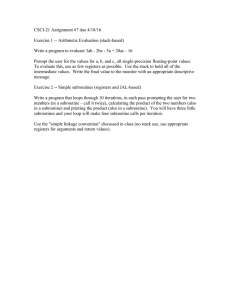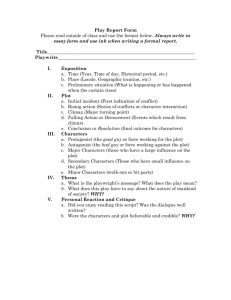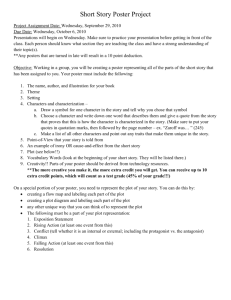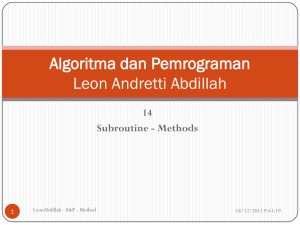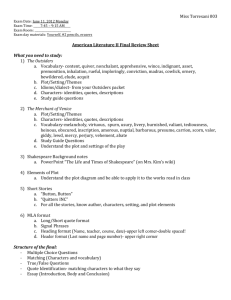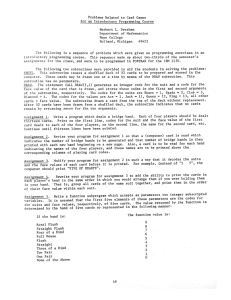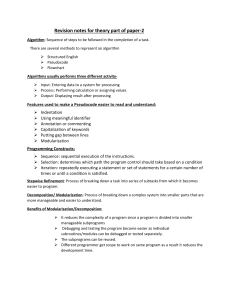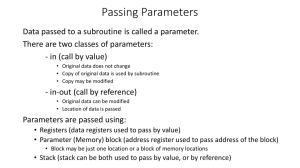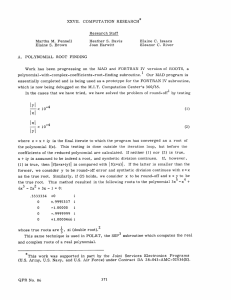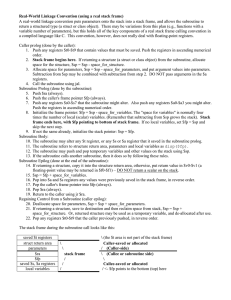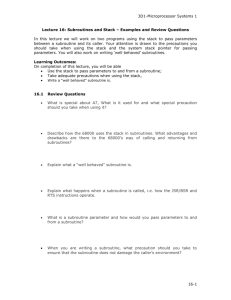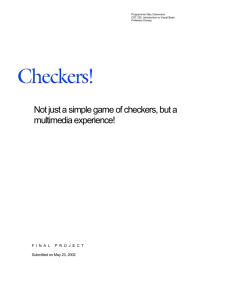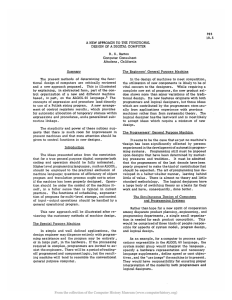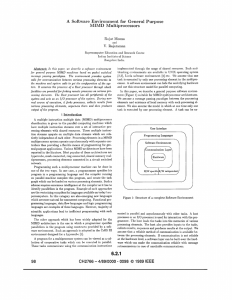z:\teaching\atm_150\hwk03
advertisement
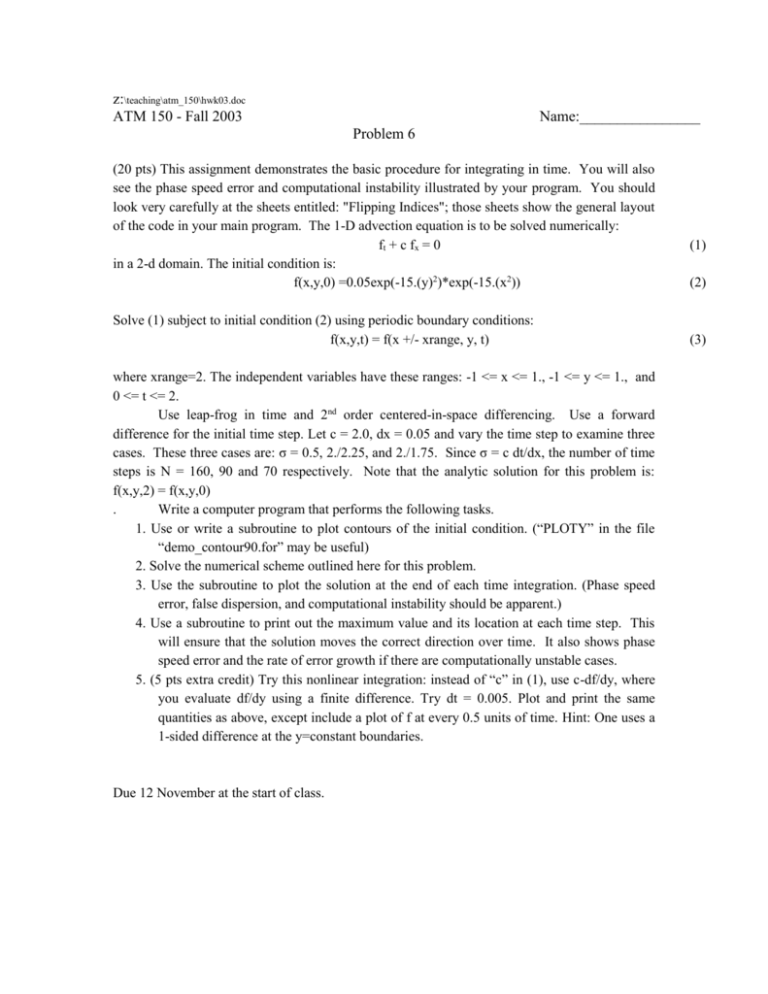
z:\teaching\atm_150\hwk03.doc ATM 150 - Fall 2003 Name:________________ Problem 6 (20 pts) This assignment demonstrates the basic procedure for integrating in time. You will also see the phase speed error and computational instability illustrated by your program. You should look very carefully at the sheets entitled: "Flipping Indices"; those sheets show the general layout of the code in your main program. The 1-D advection equation is to be solved numerically: ft + c f x = 0 in a 2-d domain. The initial condition is: f(x,y,0) =0.05exp(-15.(y)2)*exp(-15.(x2)) Solve (1) subject to initial condition (2) using periodic boundary conditions: f(x,y,t) = f(x +/- xrange, y, t) where xrange=2. The independent variables have these ranges: -1 <= x <= 1., -1 <= y <= 1., and 0 <= t <= 2. Use leap-frog in time and 2nd order centered-in-space differencing. Use a forward difference for the initial time step. Let c = 2.0, dx = 0.05 and vary the time step to examine three cases. These three cases are: σ = 0.5, 2./2.25, and 2./1.75. Since σ = c dt/dx, the number of time steps is N = 160, 90 and 70 respectively. Note that the analytic solution for this problem is: f(x,y,2) = f(x,y,0) . Write a computer program that performs the following tasks. 1. Use or write a subroutine to plot contours of the initial condition. (“PLOTY” in the file “demo_contour90.for” may be useful) 2. Solve the numerical scheme outlined here for this problem. 3. Use the subroutine to plot the solution at the end of each time integration. (Phase speed error, false dispersion, and computational instability should be apparent.) 4. Use a subroutine to print out the maximum value and its location at each time step. This will ensure that the solution moves the correct direction over time. It also shows phase speed error and the rate of error growth if there are computationally unstable cases. 5. (5 pts extra credit) Try this nonlinear integration: instead of “c” in (1), use c-df/dy, where you evaluate df/dy using a finite difference. Try dt = 0.005. Plot and print the same quantities as above, except include a plot of f at every 0.5 units of time. Hint: One uses a 1-sided difference at the y=constant boundaries. Due 12 November at the start of class. (1) (2) (3)


